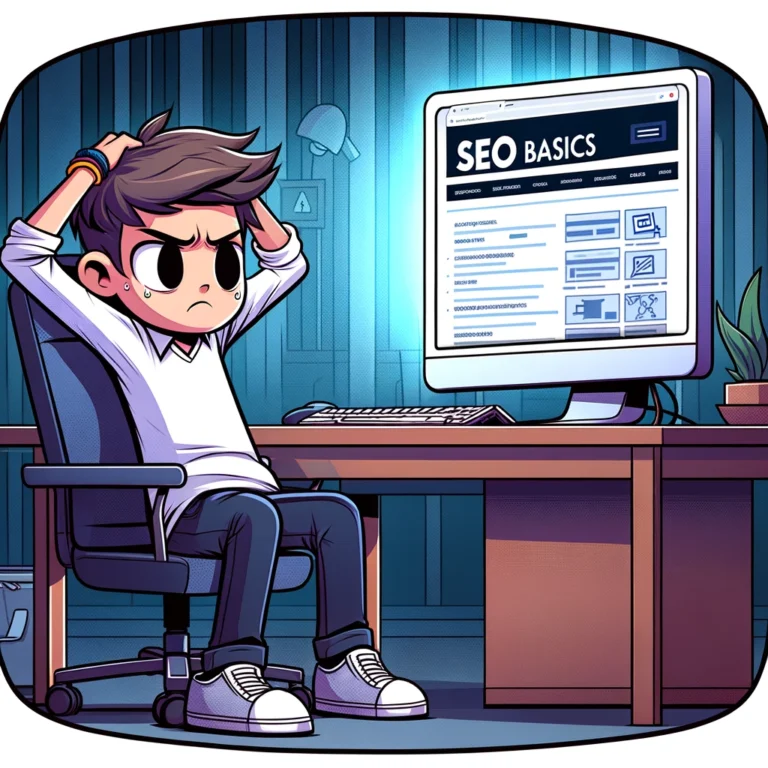In the fast-evolving world of digital marketing, Search Engine Optimization (SEO) remains a cornerstone for any business looking to enhance its online presence. SEO can seem complex and daunting, especially for newcomers. However, breaking it down into manageable goals can make the process more approachable and effective. This guide will walk you through the steps to set realistic SEO goals that align with your business objectives.
Understanding SEO
Before diving into goal setting, it’s crucial to have a clear understanding of what SEO entails. SEO is the practice of optimizing your website to improve its visibility in search engine results pages (SERPs). This involves various strategies and tactics, including keyword research, content creation, technical website optimization, and link building.
Setting Your SEO Foundation
1. Assess Your Current SEO Status
Begin by assessing where your website currently stands in terms of SEO. Tools like Google Analytics and Google Search Console can help you understand your site’s traffic sources, keyword performance, and technical issues. This assessment will serve as the baseline for your SEO goals.
2. Understand Your Audience
Knowing who your audience is and what they are searching for is crucial. Use tools like Google Trends and audience insights from social media platforms to get a sense of the keywords and topics that are relevant to your potential customers.
3. Competitive Analysis
Look at what your competitors are doing in terms of SEO. Identify the keywords they are targeting, the type of content they are creating, and their backlink strategy. This will help you spot opportunities and areas for improvement in your own strategy.
Setting Realistic SEO Goals
1. Increase Organic Traffic
A primary goal for many businesses is to increase organic traffic, which refers to visitors coming to your site from search engines without paid promotion. Set a percentage increase as your target based on your current traffic and market analysis.
2. Improve Keyword Rankings
Identify a set of target keywords relevant to your business and set goals to improve their rankings. Be specific about the ranking improvements you want to achieve, such as moving from page three to page one for certain keywords.
3. Enhance User Engagement
SEO isn’t just about attracting visitors; it’s also about keeping them engaged. Set goals related to increasing the average time on site, reducing the bounce rate, or improving the click-through rate (CTR) from SERPs.
4. Increase Conversions
Ultimately, SEO should contribute to your bottom line. Set conversion-related goals, whether they’re about increasing sales, sign-ups, or other actions relevant to your business.
Developing an SEO Strategy
1. Content Strategy
Develop a content strategy that addresses the needs and interests of your audience while incorporating target keywords. Plan a mix of blog posts, articles, videos, and other content types that will attract and engage your target audience.
2. On-Page Optimization
Ensure that each page of your website is optimized for SEO. This includes using the right keywords in your titles, meta descriptions, headings, and throughout the content. Also, optimize your images with alt tags and ensure your site’s mobile responsiveness.
3. Off-Page SEO
Build a robust link-building strategy to acquire high-quality backlinks from reputable sites in your industry. This will help improve your site’s authority and rankings.
4. Technical SEO
Address technical SEO aspects such as site speed, security, and structured data. These factors can significantly impact your site’s rankings and user experience.
Monitoring and Adjusting Your Goals
Regularly monitor your SEO performance and adjust your strategies as needed. SEO is a long-term process that requires ongoing effort and adaptation to changing search engine algorithms and market conditions.
Setting realistic SEO goals is essential for any business looking to improve its online presence. By understanding SEO basics, assessing your current status, and carefully planning your strategy, you can set goals that are not only achievable but also impactful for your business growth.

Tailoring Your SEO Goals to Business Size and Type
Every business is unique, which means your SEO strategy must be tailored to fit your specific circumstances. Depending on your business size and industry, the approach and intensity of your SEO efforts may vary.
1. Small Businesses and Local SEO
For small businesses, local SEO is a crucial area of focus. Aim to dominate local search results by optimizing your Google My Business listing and ensuring your business appears in local directories. Set goals around increasing local search rankings for keywords that include your city or region.
2. E-commerce SEO
If you run an e-commerce site, your SEO goals should include optimizing product descriptions, improving internal linking structures, and enhancing user experience (UX) to reduce cart abandonment rates. Specific goals might involve increasing rankings for product-specific keywords or boosting organic traffic to product pages.
3. B2B SEO
For B2B companies, the buying cycle is often longer, and the focus might be on generating leads rather than immediate sales. SEO goals should include content creation that targets each stage of the buyer’s journey, improving engagement with resources like whitepapers or case studies, and enhancing visibility for high-value keywords.
Leveraging SEO Tools and Resources
Investing in the right tools can significantly enhance your SEO efforts. Here’s how you can leverage tools to meet your SEO goals:
1. Keyword Research Tools
Use tools like SEMrush, Ahrefs, or Moz for comprehensive keyword research, competitor analysis, and SEO audits. These tools help refine your keyword strategy and monitor your ranking progress.
2. SEO Analytics and Performance Tracking
Utilize platforms like Google Analytics and Google Search Console to track your website’s performance. Set up goals within these tools to monitor organic traffic, bounce rate, conversion rates, and more.
3. Automation Tools
Consider using SEO automation tools for tasks like reporting, monitoring backlinks, and tracking rankings. These tools can save you time and provide regular insights into your SEO performance.
Practical Tips for Achieving Your SEO Goals
1. Prioritize Quick Wins
Identify and prioritize “low-hanging fruit” opportunities, such as optimizing meta tags, fixing broken links, and improving page load speeds. Achieving these quick wins can provide immediate improvements in SEO performance.
2. Focus on Quality Content
Create high-quality, relevant content that addresses the needs of your audience. This not only attracts traffic but also encourages other sites to link back to your content, which improves your site’s authority and rankings.
3. Be Patient and Persistent
SEO success doesn’t happen overnight. It requires patience, persistence, and continuous optimization. Keep your goals realistic and adjust them based on the results you are achieving and the insights you gain.
Conclusion
Setting realistic SEO goals is a dynamic process that evolves with your business and the digital landscape. By establishing clear, measurable, and achievable objectives, you can systematically enhance your site’s visibility, drive more traffic, and ultimately achieve your business goals. Stay committed, keep learning, and adapt your strategies as needed to stay ahead in the competitive world of SEO.
By embracing these strategies and continuously refining your approach based on performance data, your business can not only achieve but exceed its SEO expectations, fostering growth and success in the digital age.
References
- Google Analytics: https://analytics.google.com
- Google Search Console: https://search.google.com/search-console
- Google Trends: https://trends.google.com



